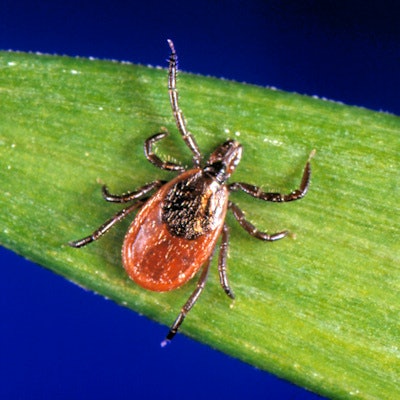
As if the symptoms of Lyme disease weren't debilitating enough, a new systematic review has identified more than half a dozen orofacial manifestations of the condition, including temporomandibular joint pain, altered taste, and facial palsy. The findings were published in the August issue of the Journal of Dental Hygiene.
When a clinical exam fails to identify a specific oral health pathology in patients who experience unexplained orofacial symptoms, dental professionals should consider Lyme disease as a possibility, the authors wrote.
"It is important for dental professionals to be aware of the orofacial manifestations of Lyme disease and to have a referral and follow-up plan with primary care physicians to achieve the best possible health outcomes for their patients," wrote the group, led by Brenda Bradshaw, RDH, from Old Dominion University (J Dent Hyg, August 2021, Vol. 95:4, pp. 23-31).
An estimated 476,000 people in the U.S. are diagnosed with Lyme disease every year, according to the U.S. Centers for Disease Control and Prevention. It is the most common vector-borne disease caused by Borrelia burgdorferi and is transmitted through the bite of blacklegged ticks (also known as deer ticks). Lyme disease is known to cause headaches and nonspecific orofacial pain that can mimic temporomandibular joint disorders.
A 2014 study revealed that 46% of surveyed healthcare providers had encountered a patient with Lyme disease. Nevertheless, researchers from that study concluded that medical professionals, including those in dentistry who may be unaware of the link between Lyme disease and oral manifestations, need to be better educated about the disease to promote earlier diagnosis, Bradshaw and colleagues wrote.
The researchers conducted the systematic review to better inform dental teams of the frequency of Lyme disease-associated orofacial manifestations in patients in the U.S. The group analyzed 12 articles published from 1992 to 2017, covering a total of 951 patients with Lyme disease. None of the articles were published in dental journals.
The following orofacial symptoms were reported in those with Lyme disease:
- Facial palsy
- Headache
- Temporomandibular joint pain
- Altered taste
- Stiff neck
- Sore throat
- Neck pain
- Erythema migrans rash on the head or neck
The most common symptom was facial palsy, which occurred in 404 patients (42.5%), followed by headache in 376 patients (39.5%). Having a sore throat was the least common symptom, affecting only 29 patients (3%).
Limitations of the review included generalizability. Studies of populations outside the U.S. were excluded, and variants of Lyme disease may differ in other countries, the authors wrote.
More studies are needed to help clinicians understand the oral and facial symptoms linked to Lyme disease and to treat them in a timely manner, the group concluded.
Failing to make a "timely diagnosis may allow the disease to progress to later stages characterized by chronic suffering and life-threatening conditions that are difficult to treat, negatively affecting the patient's quality of life," Bradshaw and colleagues wrote.




















